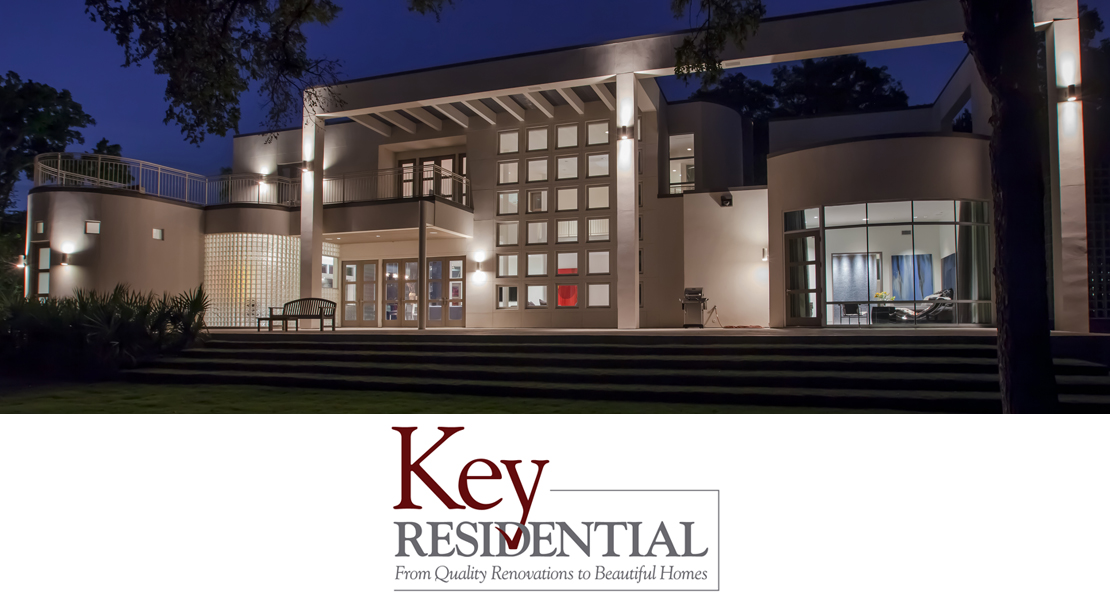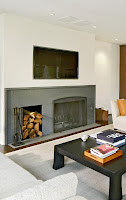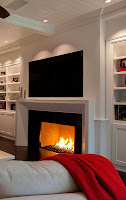According to Builder Online, of the 15 top trends in design for single-family living, 20% involve the outdoors. Homeowners are tending to desire private and usable outdoor living spaces that encourage entertaining while providing all the comforts of their indoor counterparts. These spaces act as a link between the indoors and out through larger, more expansive views, creative doorways and innovations in screening and weather protection. If you're contemplating a renovation or addition to better integrate the outdoors into your home, consider the following factors and how they can have a major impact on the experience within your spaces.
The View:
An easy (and generally less expensive) way to integrate nature into your home's interior is by increasing visibility from indoor to out. Consider using floor to ceiling windows as a way to remove the visual barriers, bring in natural light and make a dramatic statement within any space. Corner windows are a great alternative as they allow you to enjoy a more panoramic view of your landscaping and create a perfect niche for built in seating. More traditional sunrooms or enclosed porches create an extension of the interior space into the footprint of the exterior, giving you the experience of being surrounded by the outdoors while keeping you fully sheltered at the same time.The Doorway:
When selecting doors to transition between interior and exterior living spaces, the desired aesthetic, visibility, and functionality all come into play. Traditionally sliding glass doors have provided the necessary partition and ease of use while allowing light to pass into interior spaces. An increasing number of vendors such as Jeld-Wen and NanaWall are offering a unique alternative in multi-fold or accordion doors that can be customized to provide as much or as little transparency as desired. This innovative door style provides the flexibility of varying degrees of enclosure, from partially enclosed indoor spaces to entire walls that fold up and open to the space beyond. Such flexibility results in a greater fluidity between the in- and out-door spaces, encouraging an increased use of both for special events & entertaining or just everyday enjoyment.The Safe Haven:
Whether your outdoor oasis is in the form of a poolside cabana or a covered patio, it has to be a welcoming space that allows you to comfortably experience the splendor of nature. Overhead coverage is a necessity for protection from the elements and allows for the customization of outdoor living areas with creature comforts previously reserved for the indoors. Functional kitchens and entertainment areas with integrated media are increasing in popularity. With the inclusion of climate control elements like Built-In Heaters and Large Scale Fans, these outdoor spaces can be enjoyed even longer throughout the year.
A rise in awareness of insect-borne illness has resulted in homeowners, especially here in Texas, requesting the integration of anti-pest measures. One major upgrade from a Citronella centerpiece on the patio table is to install repellent misting systems. These systems are integrated into the landscape design and periodically spray a fine mist of repellent from misters strategically placed around the perimeter of the property, helping to create a bug-free zone. And to ensure an extra level of safety, retractable screens like the ones shown below by Phantom Screens can be discreetly installed in a variety of outdoor areas. They remain hidden until needed and are easy to engage with the touch of a button.
Outdoor Oasis status achieved!


















